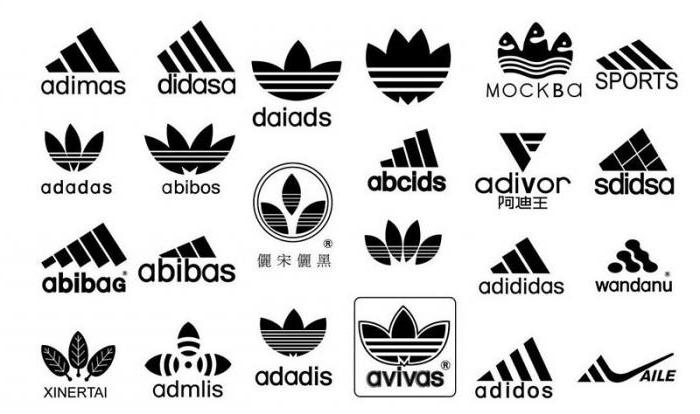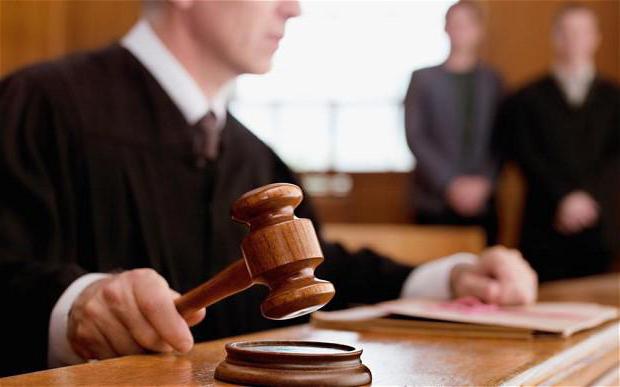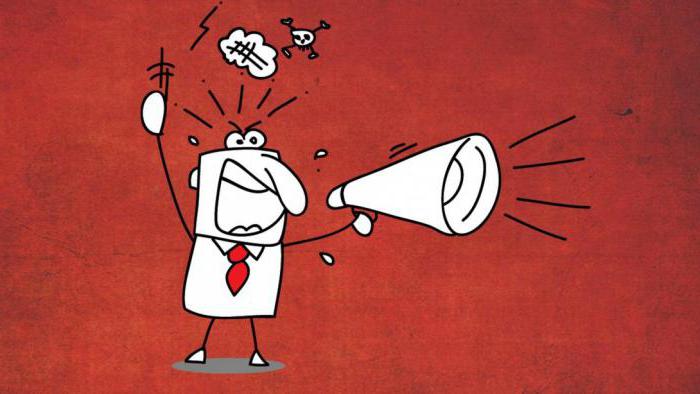One of the advantages of the modern world is a huge assortment of any products. Each buyer can easily find what is ideal for him in terms of quality, design, places of sale and other factors. Not the least role in the selection of goods is played by the trademark - a designation that serves to highlight a product from a number of similar ones, for example, an individual logo, shape, color design. But well-known companies often face such a phenomenon as a violation of the trademark rights of their products. What is the problem in such situations and what to do if you know that such a crime (otherwise you can’t call it) happened?
What is a trademark?
Before proceeding to the legal part of the issue, you need to figure out what is a trademark all the same. as mentioned above, it is used to identify a particular brand among a number of similar products. Like any branding element, a trademark belongs to its copyright holder, who can put it wherever he wants (that is, if the owner of the Nike trademark decides to produce toothpaste with this label, no one can stop him), and also conclude a contract for the right the use of a trademark with other companies (letting someone else, for a certain amount of money, issue the same toothpaste).

As for classifications in the form of expression, we can distinguish:
- Verbal (usually this is the name of the company or product that is placed on the object. They are most often found. For example: Samsung, Jack Daniels, Walt Disney. In addition, phrases such as the phrase (Red Pischevik) and slogans (Nokia - connecting people ));
- Graphic (any image, whether it is a combination of geometric shapes or a portrait of a person. Another name is emblems. Examples include brand names of cars, an apple of Apple or a bunny of Playboy);
- Volumetric (related to the appearance of the goods sold - usually this is a specific packaging design. Most often used by manufacturers of perfume (the recognizable bottle of Chanel No. 5) and drinks (the original glass bottle of Coca-Cola));
- Sound (usually found in areas where other signs cannot be used: radio (station names inserted between songs), musical themes of television programs (What, where, when?) Or films (“The Imperial March” from Star Wars), audio advertising (“ What I love ”from McDonalds));
- Combined. (Combine several previous types of trademarks: “Beeliine” has an emblem in the form of a black and yellow circle and an inscription under it with the name of the company, the same can be said about the brand name of “Sberbank”: logo + company name) .
The rights of the trademark owner, as mentioned above, are legally secured and enable him to dispose of this trademark by any means and prohibit other market entities from doing so.
Registration: preparation
The right to use a trademark is given to its owner only after the registration of this mark with Rospatent. Registration itself includes several stages:
First you need to make sure that the sign that you provide for consideration meets all the rules of the Federal Intellectual Property Service: it should not contain spelling errors, images that contradict moral rules, words that describe a whole class of goods and services (copier, diaper etc.), you cannot use images of state symbols that are not accompanied by either text or any graphic additions (exclusively a flag, for example, without a company name) and so on.Special attention should be paid to the selection of the appropriate class in the International Classification of Goods and Services - if the wrong category is selected, the trademark will not be registered (by the way, Rospatent gives some recommendations on how to determine the class). Naturally, the trademark must be unique - the initial check falls on the shoulders of the applicant, even if there is the slightest match with the already registered marks (which are already protected by patent law) the trademark will have to be changed until it is considered absolutely unique (similar services for a certain fee is provided by outsourcing firms that not only seek analogies, but also adjust the layout of the trademark).
The patent right for a trademark will be granted after filing an application with Rospatent, to which the designation of the mark will be attached, a list of goods and services for which this mark will be used, and a verbal description of the trademark (i.e. a detailed description of the image: its shape, color scheme, fonts and so on).
Registration: official part
After that, registration begins. A formal examination, as its first stage, lasts a month from the date of application. At this stage, the correctness of registration of all necessary documents is checked. At the main examination, which takes eight to ten months, a detailed check of the conformity of the trademark to the selected class of MKTU, the uniqueness of this mark and other points are carried out. If during the check some questions arise, the applicant must provide additional information about his trademark.
Despite the fact that the registration operation can be performed independently, many entrepreneurs entrust this matter to professionals. Very often there are situations when, when self-registering, the applicant does not take into account some aspects of the use of his trademark, thereby creating loopholes for those who want to violate his right to a trademark and a service mark.
Himself to blame!
Of course, there are different options for attacking the right to a trademark and a service mark. The most common of these, misuse, will be discussed later. Now I would like to talk about how trademark owners themselves can make it vulnerable.

Errors in the registration procedure or use of the mark can cost the copyright holder dearly. Three years after the trademark is registered in Rospatent, its legal protection may be terminated (including at the request of the company's competitors). This can happen in the following cases:
- The registered TK (trademark) is not used at all or is not used for all goods and services for which it was registered. In the latter case, by the way, competitors can easily begin to produce products from these unused categories under someone else's trademark, which obviously will not affect the copyright holder in the best way;
- A trademark is registered for one person, and is used by another without registration of relevant documents. To avoid this, even if the owner of the TK decided to leave the business by transferring it to another person, he must also transfer the right to use the trademark;
- TK has been modified during use. Upon registration, as already mentioned, the applicant provides a full description of the TK. If even the smallest element has been changed, it is considered that this is a new trademark that is not protected by law. And the old, in this case, can be used by anyone.
Here is a short list of problems with the use of TK, in which the copyright holder is solely to blame, ill-wishers in such situations can only take advantage of his mistakes. Now is the time to move on to direct attacks on the trademark.
How to punish?
The most common form that the violation of exclusive rights to a trademark takes is the release of counterfeit products. It is worth noting that if a fake is issued even with minimal changes in the ToR (this is often done by Chinese companies that market, for example, Abibas), then it no longer violates any rights. If the copyright holder has found on the market a copy of his products with the same TK, he has every right to go to court.

This procedure consists of several steps. First, you should contact the person who releases the fake product with a request to stop the illegal use of TK. After that, if the offender responds to the appeal, negotiations begin, after which the situation can be resolved without judicial intervention. If this does not help, you will have to collect evidence and apply to the judiciary. Usually, all judicial measures take from four months to six months. If the copyright holder does not want to go directly to court, you can write a statement to the police (after all, they are engaged not only in criminal, but also in civil and administrative crimes) that a violation of trademark rights has been recorded. The second option is the Federal Antimonopoly Service, which has enough authority to recognize the actions of the manufacturer of falsification as unfair competition.
Naturally, in such situations, the copyright holder is better off using the advisory and legal services of professional lawyers who specialize in intellectual property. They will help not only to collect evidence, but also provide a high-quality representation of the trademark owner in court, which is guaranteed to help win the case.
Criminal liability
What is the liability for trademark infringement? those who knowingly or unconsciously break the law can face civil law (then he will have to compensate for the losses of the copyright holder) and criminal administrative responsibility (the state will have to pay here).

Of course, criminal liability is considered the most serious. It occurs if repeated violations of the use of TK were recorded (that is, the entrepreneur continued to produce counterfeit products for a long time) and if the copyright holder suffered serious losses (more than 250 thousand Russian rubles). In this case, the violator faces either a fine (from 100 to 300 thousand) or imprisonment for up to two years, to which a fine of 80 thousand will be added.
Administrative responsibility
Getting under administrative responsibility is much easier. It does not matter for her whether the violation of the exclusive rights to the trademark was single or multiple, what damage it caused. Here the punishment depends on the type of activity that was carried out under another's TK. If a civilian, official or legal entity used a trademark that does not belong to him, he faces a fine of 5 to 200 thousand rubles, depending on his legal status, in addition, the court may decide to confiscate any equipment that was used in the manufacture of counterfeit goods and the counterfeit itself .

In the case when this person was engaged in the production and sale of counterfeit products, then the punishments will be more serious. Depending on the severity of the crime, the fine will be two, three or five times the value of the confiscated counterfeit goods.
Civil liability
But from the fact that the violation of the rights of the trademark owner was recognized as an administrative or criminal offense, the owner of the TK does not gain anything. All compensation in this case is paid to the state recognized by the victim. Therefore, an additional lawsuit is filed to bring the violator to civil liability and to pay compensation to the copyright holder.

Here the punishments are less severe: a fine of 10 thousand to 5 million rubles, or the double cost of the confiscated counterfeit goods. When pronouncing the verdict, the court takes into account how long TK was used without the permission of the copyright holder, whether there have already been cases when the manufacturer of fakes was held to any responsibility or warnings about the illegality of his actions, what damage the owner of the trademark suffered. Sometimes the final amount of compensation is lower than the initial claim, as the court considered that the copyright holder overestimates the damage caused to it.
Alienation of rights
In the practice of using TK, there is such a thing as alienation of trademark rights. It means that the rightholder transfers his rights to another person, constantly or temporarily, in a certain territory or without specifying certain boundaries for the use of these rights.

The original owner of the TK must indicate the conditions of use and specify the quality of products manufactured by another person under his trademark. In addition, the licensor (as they call the one who transfers his exclusive right) is fully responsible for the actions of the licensee (recipient of this right), that is, all claims will be sent to the parent company, and not to the one who produced low-quality goods under its TK. Separately, it is worth noting that the contract between the licensor and the licensee is concluded in writing, otherwise the actions of the recipient of TK will be interpreted as a violation of trademark rights.
Conclusion
The desire to make a profit as soon as possible by using someone else's name is the main reason that there is a violation of the right to a trademark. Judicial practice shows that manufacturers of counterfeit products sooner or later bear responsibility for their actions, although in cases of civil law the amount of compensation that the court awards to rightholders is much lower than their claims. Cases of maximum fines of 5 million are exceptional. It often happens that the owner of TK, through his ignorance, creates loopholes for the misuse of his trademark. In any case, the prevention of such a phenomenon as violation of trademark rights is only in the hands of the owner of this TK. And even if the law is violated, the copyright holder can win.